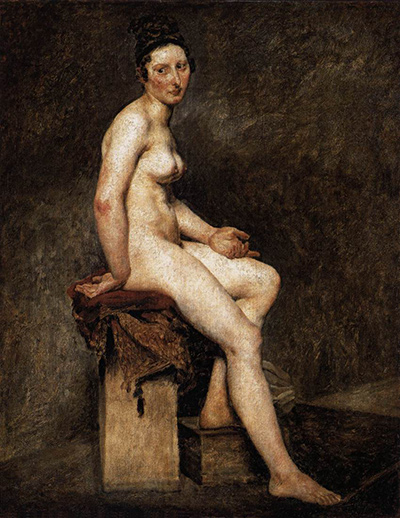Mademoiselle Rose was painted by French Romantic artist Eugène Delacroix early in his career. An exact date is unknown, but it is estimated to have been painted between 1817 and 1824, and most likely between 1920 and 1922.
Though it shows some of the hallmarks for which he is famed, his style was still in development at this stage.
The painting is named for the woman who is believed to have sat for it, Mademoiselle Rose, though it is also sometimes known simply as Seated Nude.
She modelled for Delacroix on several occasions, as well as other artists in his circle.
Though he painted in the Romantic style, Delacroix was unique in that he strived for clarity and sincerity in his work over sentimentality. Poet Charles Baudelaire described him as being “coldly determined to express passion as clearly as possible.”
The result in this painting is that Delacroix has depicted his subject very honestly. He has not embellished the background or the boxes in his studio the model is sitting on, and he faithfully captures both the slight awkwardness of her pose and the nervousness on her face.
It is this capturing of emotion and humanity that makes the work still feel like a Romantic piece.
Delacroix was also very interested in painting the way light plays across the skin of his subjects, which can be seen in this piece. He produced this piece in oils on canvas, and has employed impasto to give it depth.
Using this technique, paint is applied in a thick layer on the canvas so that brush or knife strokes can be seen, lending texture to the strokes.
Delacroix used this technique often, but only perfected it in his later works following an inspirational trip to London.
This piece is now in the collection of the Louvre in Paris.




